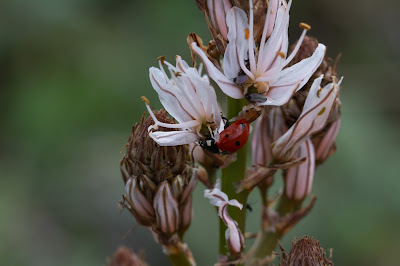

Overview
* We use here the English singular “necropolis” instead of “necropolises” following what the UNESCO site does, despite the chapter’s title. Though it may seem like the literal translation of the Italian “necropoli” would be the plural “necropolises”, “necropli” is an invariant noun meaning that "necropolis" is an acceptable translation.
We were based in Ragusa for six nights and Pantalica was a day trip for us. It was a long drive at just under 2 hours to get there due to a road deviation and rough roads with debris across them from recent heavy rains. Coming back, we found a better route and cut the driving time to 1.5 hours. The take away message is that from Ragusa it’s a long drive, 3-4 total hours total by car. It’s not much better from Syracuse at about an hour and 15 minutes each way. If you are interested in this area, consider spending a few nights nearby, for example, at Palazzolo Acreide or Buccheri. One or two days can then be spent at the Necropoli Pantalica and one or two days exploring Palazzolo Acreide (one of the I Borghi più belli d'Italia) and its Teatro Greco and I Santonini (statues carved in rock). At least, that’s what we would do next time.
Views of Necropolis of Pantalica. Left: Multiple tombs above the Torrente Calcinara. Center: Tomb at Filoporto. Right: San Micidiario.



What is the Necropoli di Pantalica?
The Necropolis of Pantalica or Necropoli Pantalica is area of natural and artificial grottoes on a plateau between the towns of Ferla and Sortino in south-eastern Sicily. The area contains thousands of rock-cut chamber tombs created between the 13th to 7th centuries BC, which give important clues to the prehistory of Bronze Age Sicily. Mixed in with the tombs are dwellings dating from the period of Greek colonization and early Medieval times.
Wandering around the area, you are surrounded by two rivers and lots of interesting flora and beautiful views. You can more or less freely enter in and out of most tombs or grottoes, if you can reach them. The necropolis and the city of Syracuse were inscribed into UNESCO World Heritage sites in 2005 for their historical and archaeological interest and there rich natural landscapes.
Three photos of Calendula at Pantalica.



Flora of Pantalica
The Pantalica site is part of the nature reserve called Riserva Naturale Orientata Pantalica, known for its significant biodiversity. Most of the plants we list and show here were found high on the promontory above the Anapo river. The ecosystem of the promontory is maquis shrubland, in Italian: macchia mediterranea.
The plant list contains plants that we could identify, and is a tiny fraction of what’s there. At this time of the year (February), the most visible plants, at least in number of flowers, were the Asphodelus spp., C. ruber – red valerian, L. reflexa - Linaria, and O pes-caprae - sorrel. (It's not saying much that the sorrel was there: it's everywhere.)
Plant List
Most of the plants in the list are pictured in this post. A question mark means the we are certain of the genus but not the species.
[Anacardiaceae] Pistacia lentiscus
[Apiaceae] Foeniculum vulgare
[Araceae] Arum italicum
[Asteraceae] Calendula suffructicosa (?)
[Asteraceae] Leontodon tuberosus (?)
[Boraginaceae] Borago officinalis
[Boraginaceae] Cerinthe major
[Boraginaceae] Cynoglossum cheirifolium (?)
[Brassicaceae] Diplotaxis erucoides
[Caryophyllaceae] Silene colorata (?)
[Crassulaceae] Sedum caeruleum (?)
[Dioscoreaceae] Dioscorea communis
[Ericaceae] Erica multiflora (?)
[Euphorbiaceae] Euphorbia dendroides
[Fabaceae] Ceratonia siliqua
[Fabaceae] Lathyrus cicera
[Fabaceae] Lathyrus clymenum
[Iridaceae] Romulea bulbocodium
[Lamiaceae] Phlomis fruticosa
[Liliaceae] Asphodelus spp.
[Oleaceae] Olea oleaster
[Oxalidaceae] Oxalis pes-caprae
[Papaveraceae] Fumaria spp.
[Plantaginaceae] Linaria reflexa
[Primulaceae] Cyclamen spp.
[Ranunculaceae] Anemone coronaria
[Smilaceae] Smilax aspera
[Valerianaceae] Centranthrus ruber
Resources that we found useful for helping to identify plants we saw at Pantalica include:
- The book: “Piante spontanee alimentary in Sicilia, Guida di fitoalimurgia” [2012] by Fabio Morreale.
- The book: “Flora del Mediterraneo” [2014] by Ingrid and Peter Schönfelder (IBS).
- As usual, the useful site: Checklist flora per regione for Sicily.
- A site in Italian that explains some of the plants in the Ibleo area (Hyblean Mountains): Flora e vegetazione della Sicilia.
- When all else fails, try this list of flora endemic to Sicilia, though most of what we list here was not endemic.



Leaves at Pantalica. Left: Arum italicum. Center: Dioscorea communis. Right: Cyclamen.



Left and center: Smilax aspera. Right: A dance between Calendula and Leontondon.



Left: Cynoglossum cheirifolium. Center: Smilax aspera. Right: Fumaria.



Borage family. Left: Borago officinalis. Center: Cerinthe major. Right: Cynoglossum cheirifolium.



Plants observed at Pantalica. Left: Silene. Center: Sedum. Right: Heather.



Plants observed at Pantalica. Left: Euphorbia. Center: Romulea. Right: Linaria.



Plants observed at Pantalica. Left and center: Centranthrus ruber. Right: Leontodon tuberosus.



Lathyrus cicera and Lathyrus clymenum.


Asphodelus at Pantalica.


Trail markers at Necropolis of Pantalica.



Left: Information board for Riserva Naturale Orientata. Center and Right: Views of trail with Asphodelus.



No comments:
Post a Comment
All comments are moderated. If your comment doesn't appear right away, it was likely accepted. Check back in a day if you asked a question.